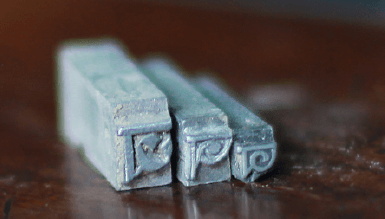
Since the 1980’s one single typeface has become synonymous with the Bengali script – primarily known under clone names such as “SutonnyMJ”, “SolaimanLipi”, “Boishakhi”, or “Shree Bangali 0550.” Apart from almost negligible differences, these fonts are basically identical. The typeface is Linotype Bengali, designed in 1982 by Dr. Fiona Ross working with Tim Halloway and a team from the Anandabazar Patrika who commissioned it.
However, in Bangladesh’s top public universities (such as Dhaka and Rajshahi’s Graphic Design departments), it’s generally referred to not as Linotype Bengali but as the “Vidyasagar” typeface, thereby implying its originator is Ishwar Chandra Vidyasagar, a literary Renaissance man of the 1800’s. Most likely this misleading appellation is due to his authorship of the popular alphabet primer where folks first encountered the Bengali letters. However, the widespread belief is that he was the primary designer of the current alphabet. The current Wikipedia article reflects public opinion well:
“He [Vidyasagar] also rationalized and simplified the Bengali alphabet and type, which had remained unchanged since Charles Wilkins and Panchanan Karmakar had cut the first (wooden) Bengali type in 1780.” (footnoted source: Murshid Ghulam, “Vidyasagar, Pundit Iswar Chandra” Banglapedia)
Acknowledged, Vidyasagar was an amazing person and made a tremendous contribution to the Bengali language, but his contribution to typeface design was minimal at best. The most significant contribution he made to Bengali typeface design was in standardizing and simplifying the set of consonant conjuncts (যুক্তক্ষর), but this was a task of filtering down a wide range of previously designed letterforms, not designing new ones.
It has also been alleged that Vidyasagar introduced the dotted characters য়, ঢ়, and ড় and . Fiona Ross writes:
“In typographic terms Vidyasagar’s Bengali primer, Varnaparicaya, is of great importance. The author, who is known to have concerned himself with typographic problems, explains in the preface to the first part the necessity for introducing the dotted characters য়, ঢ়, and ড়; the relegation of anusvara ং, visarga ঃ, and candrabindu ঁ to the list of consonants (ব্যঞ্জনবর্ণ) and ক্ষ to the conjuncts; and the omission of ঋ and ৯ which were to be regarded as obsolete. These practices still occur in printed text. The conjuncts listed by Vidyasagara replaced Carey’s as the standard set to be taught in schools. This ‘simplified’ character set, which was used to typeset his works, became known as the “Vidyasagar sort’.” (Ross, 129-130)
I find it hard to believe that Vidyasagar (1820-1891) introduced these dotted forms, because they exist in a 1831 page printed by the Baptist Missionary Press printed when Vidyasagar was eleven years old:

Baptist Mission Press ধর্মপুস্তক, লুকলিখিত সুসমাচার Calcutta 1831 (source: page 86, Ross, Fiona. The Printed Bengali Character: Its Evolution. London: RoutledgeCurzon, 1999. )
He certainly may have advocated for dotted forms and explained their appropriate use, but he didn’t introduce them.
Introduced punctuation?
It has also been alleged that Vidyasagar introduced punctuation into Bengali. His own use of Western punctuation in his Bengali writings was certainly influential in it becoming the norm, but he didn’t introduce it. The above 1831 document shows that the missionary presses had already introduced punctuation (which previously had been used in Bengali), such as hyphen, question mark and semi-colon. This is acknowledged by Niladri Sekhar Dash2. It uses both chandrabindu and the older form of ং, as well as dotted and un-dotted forms ( য and য়) which Vidyasagar is often given credit for.
Vidyasagar Typeface?
Dr Ross’s excellent book covers in great detail the evolution of Bengali typeface design, from Wilkins’s early efforts, through the prolific Serampore and BMS printing presses, the later Sanskrit presses and Figgins’ typeface up to the modern day. Indeed, the current Bengali typeface forms cannot be attributed solely to one person or institution (hence ‘evolution’), but the major milestones in typeface design were clearly from Wilkins, the Baptist Missionary Press, Figgins and Dr Ross much more than Vidyasagar.
1. Ross, Fiona. The Printed Bengali Character: Its Evolution. London: RoutledgeCurzon, 1999.
2. Dash, Niladri Sekhar. Corpus Linguistics and Language Technology: With Reference to Indian Languages. New Delhi: Mittal Publications, 2005. Web. 8 Jan 2016.








